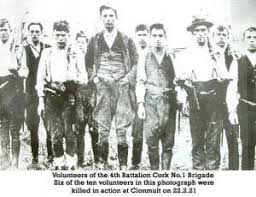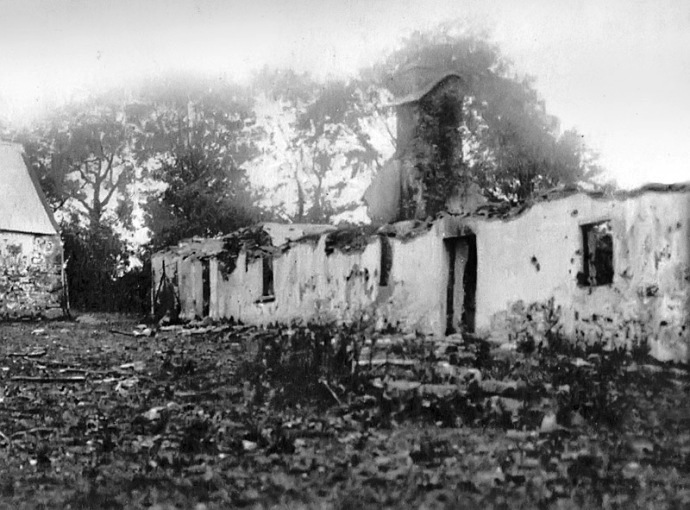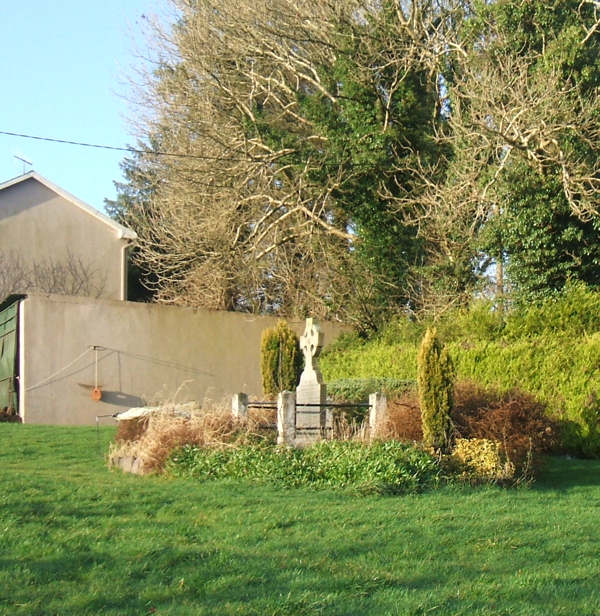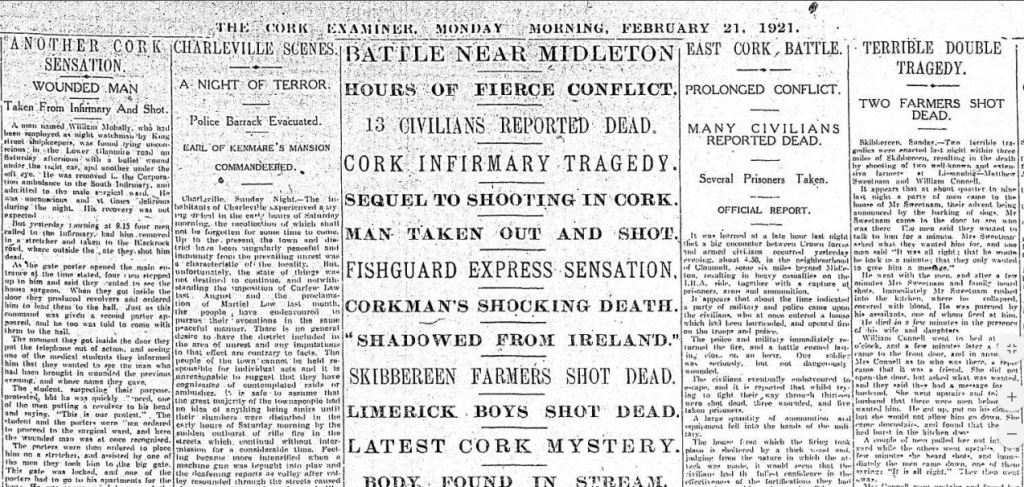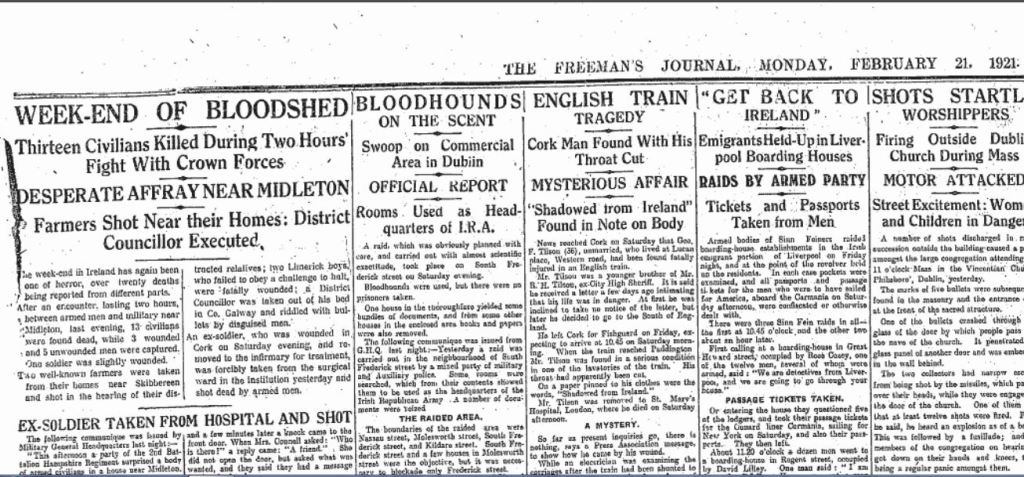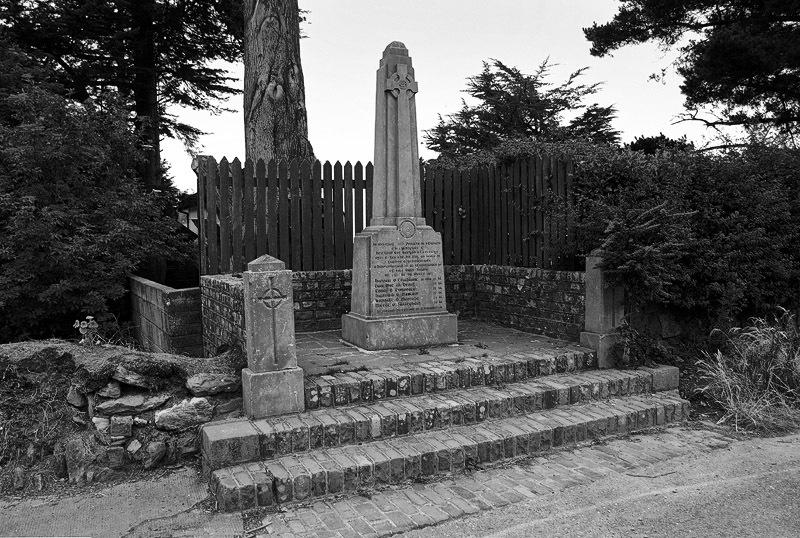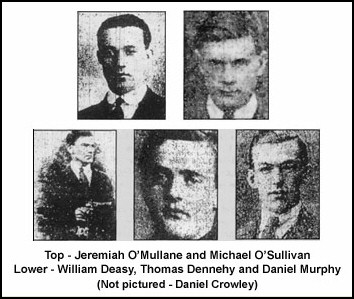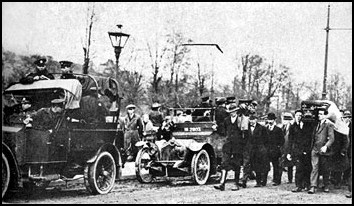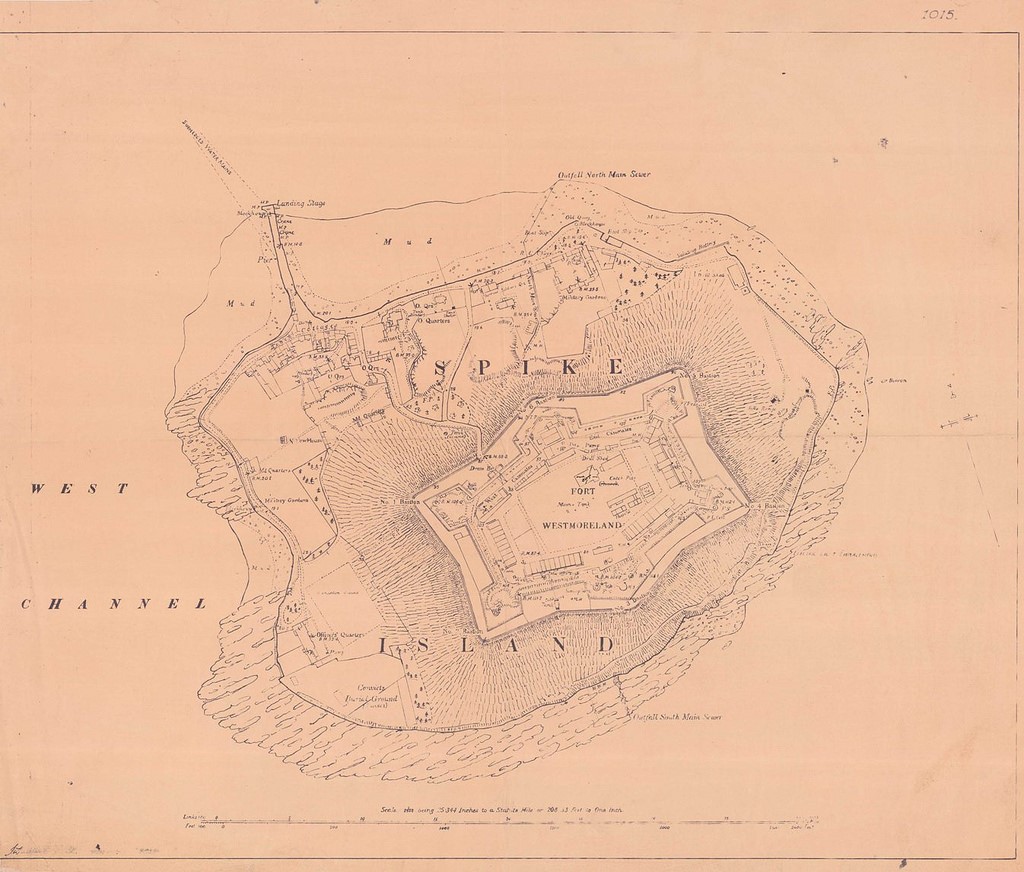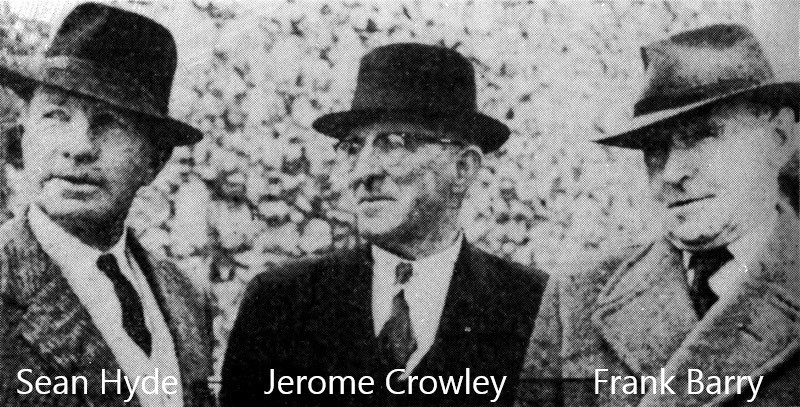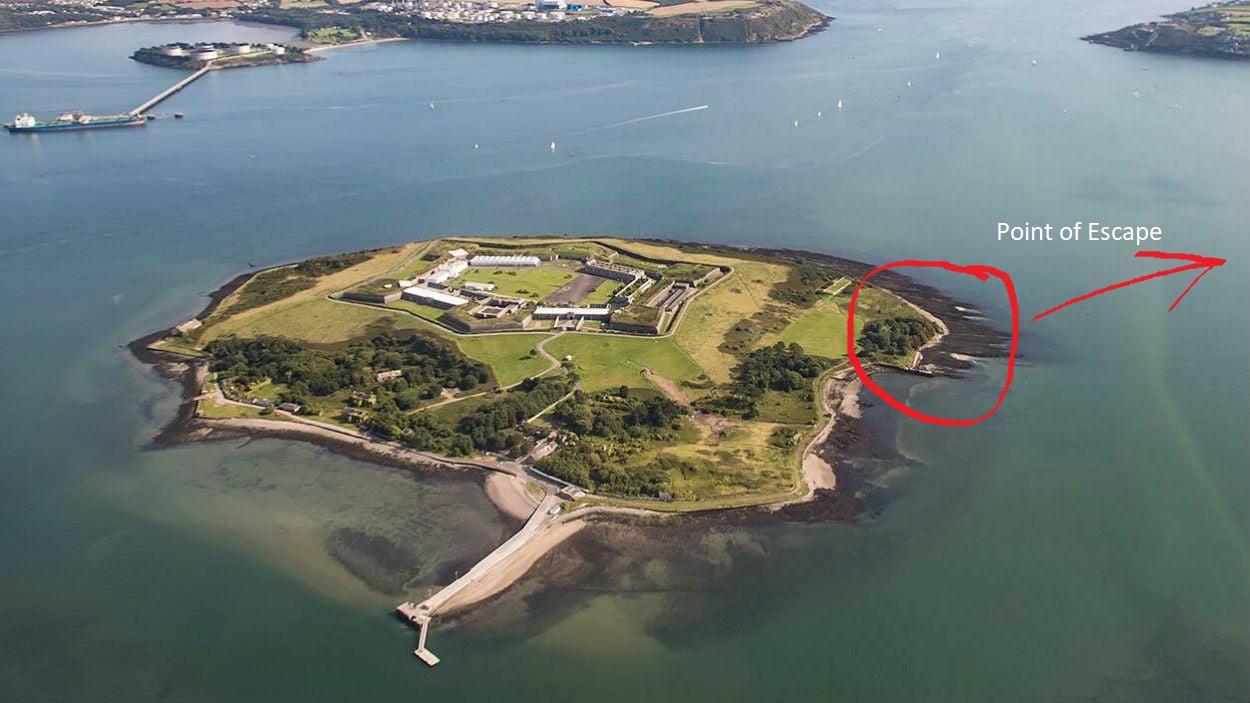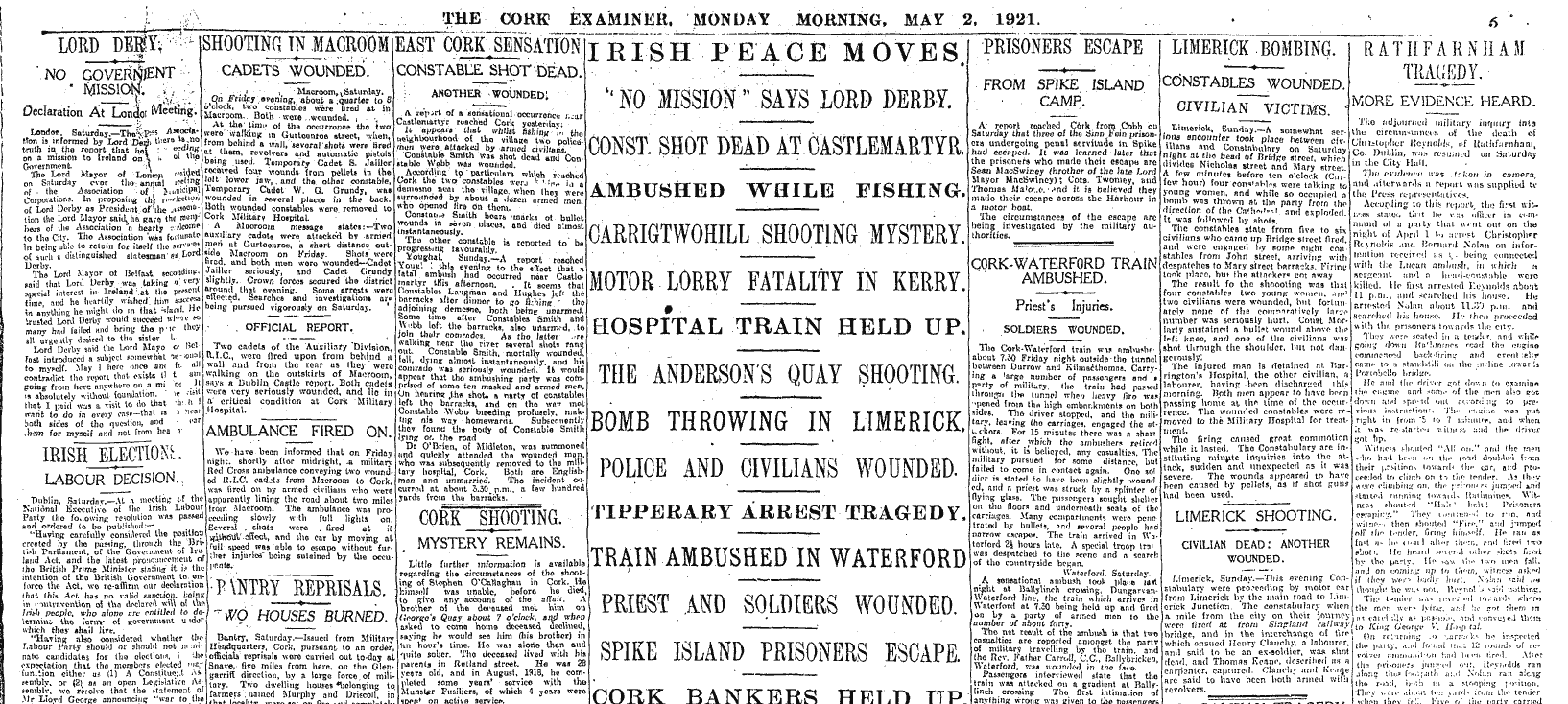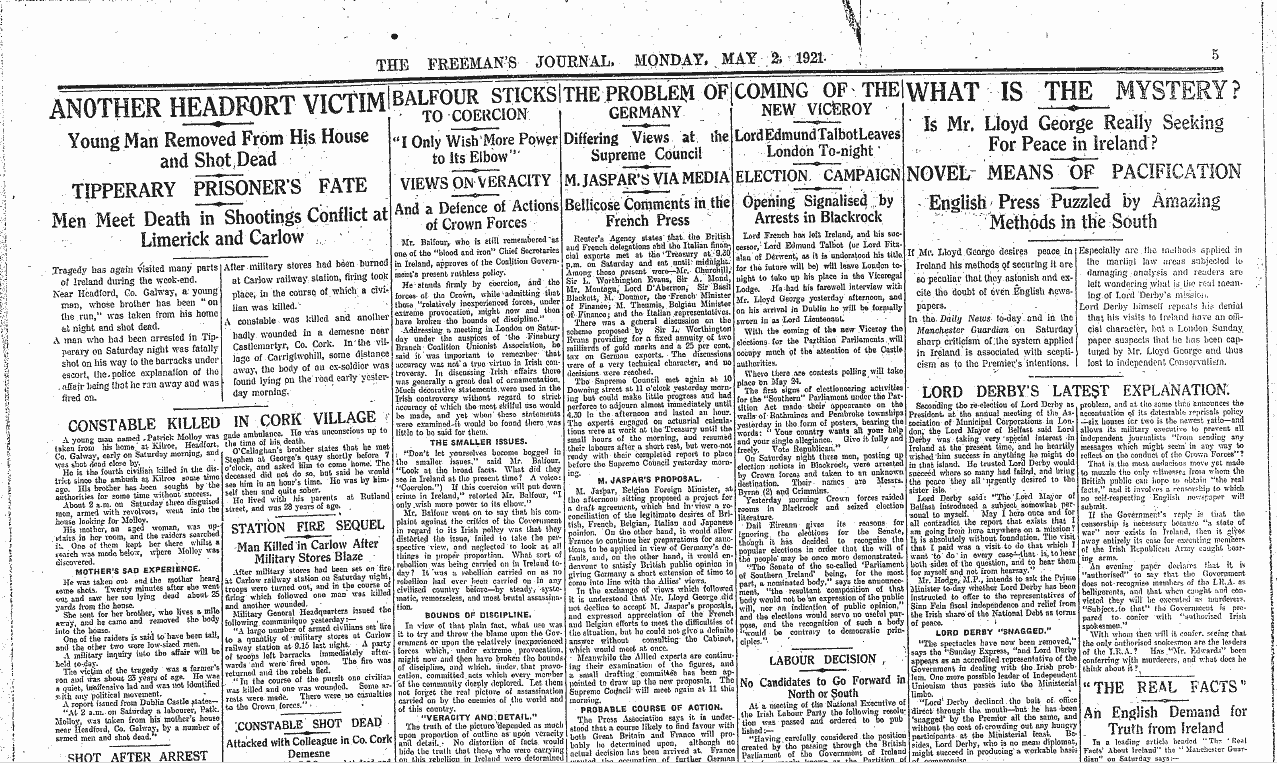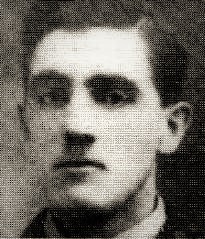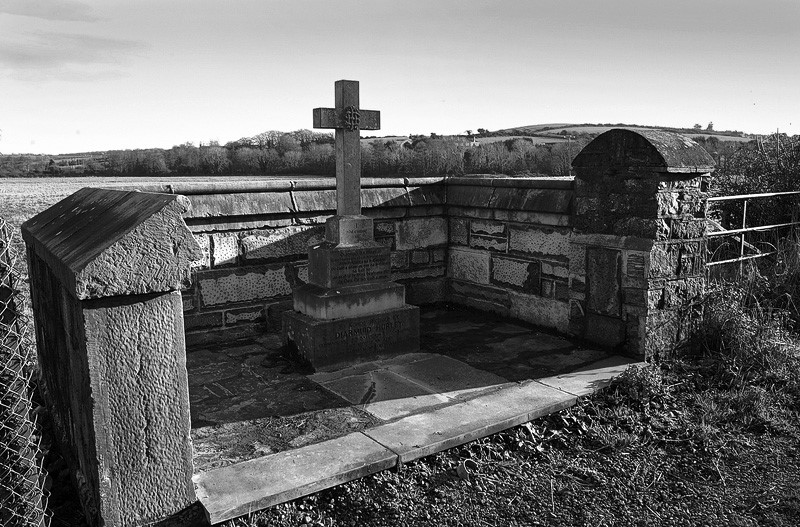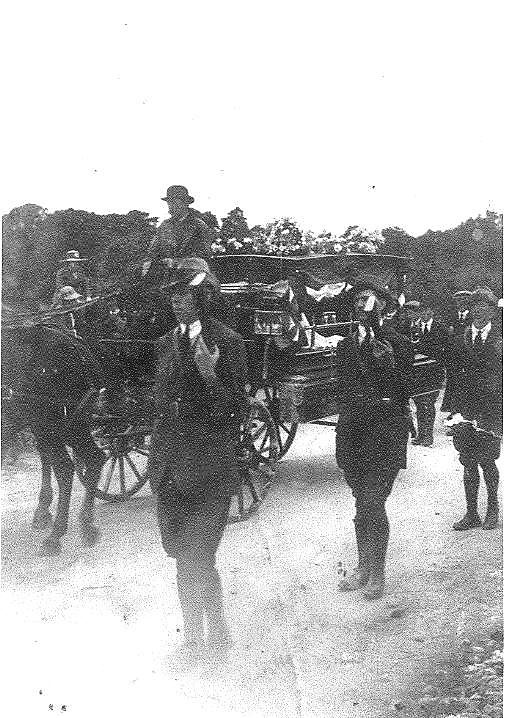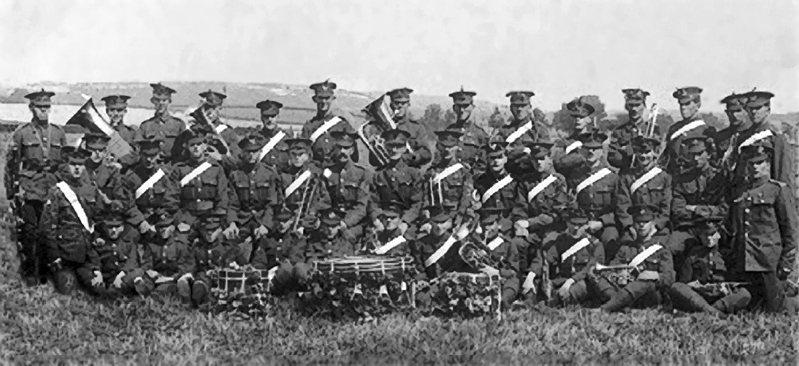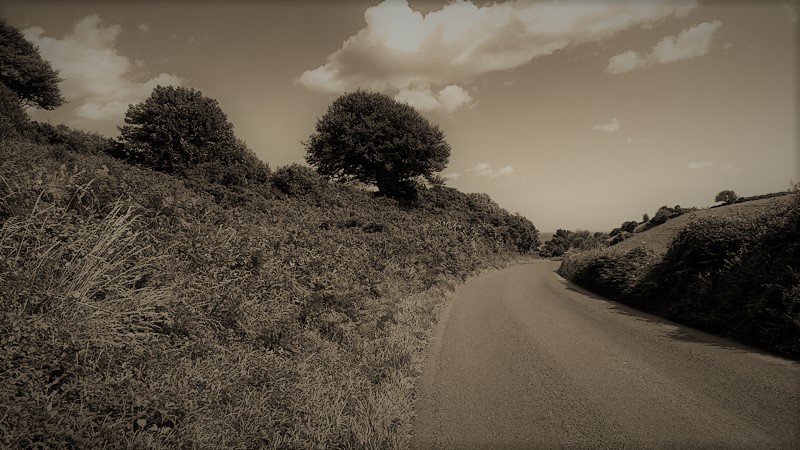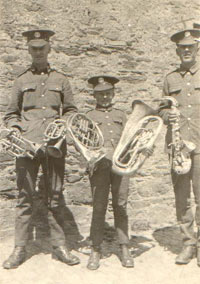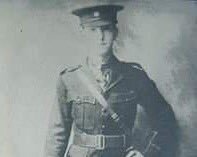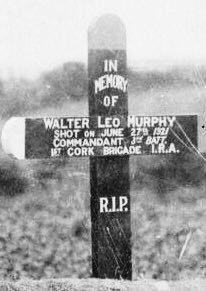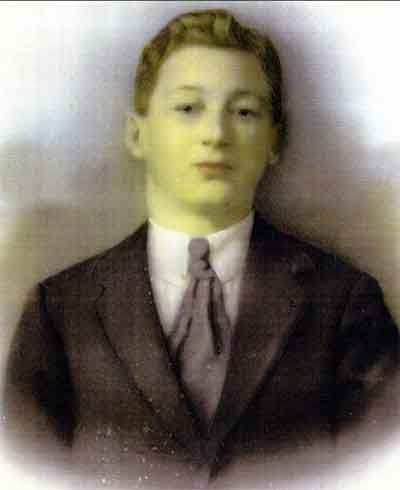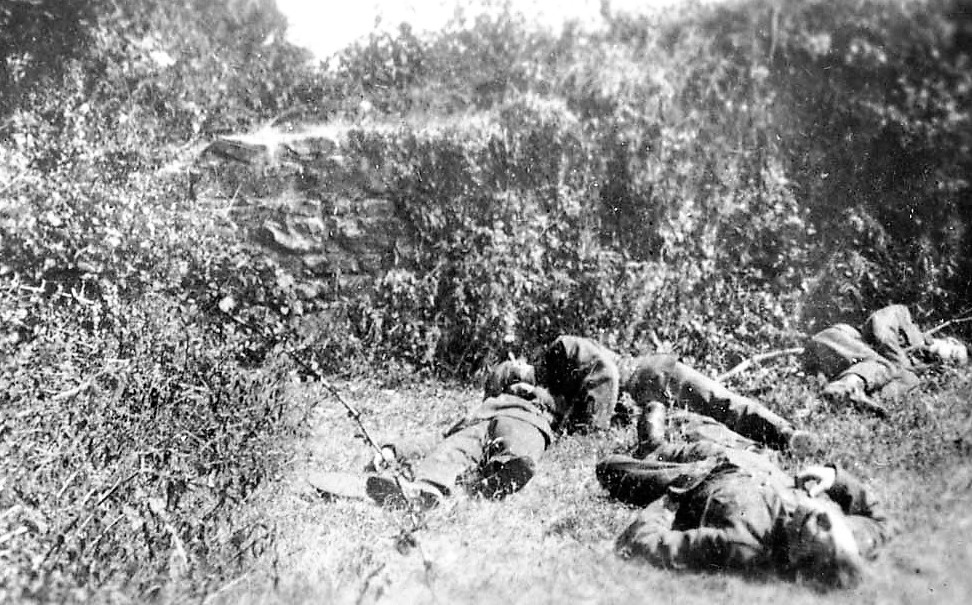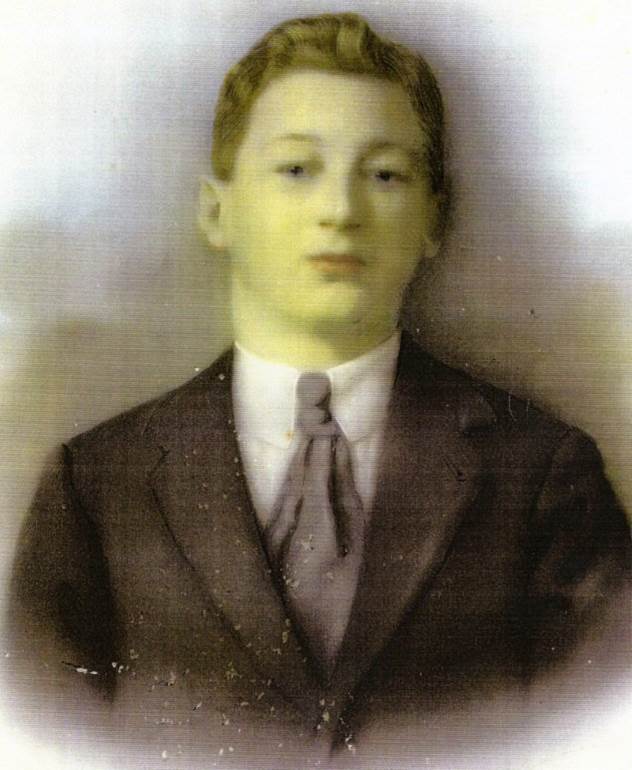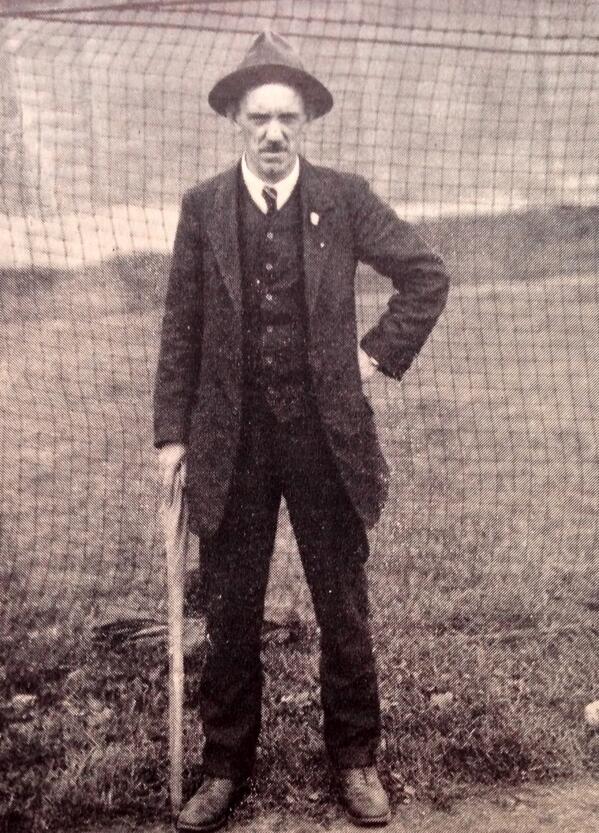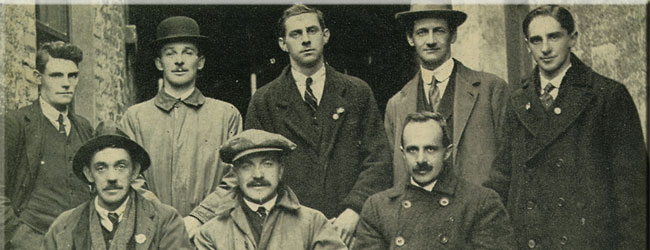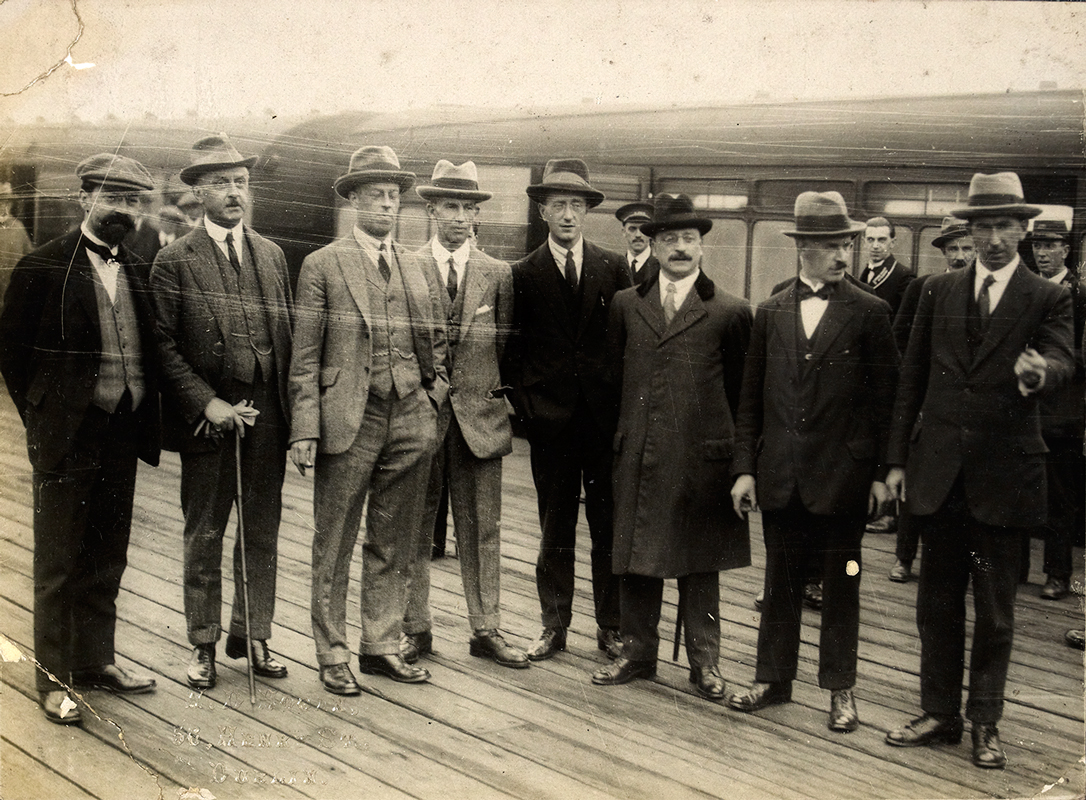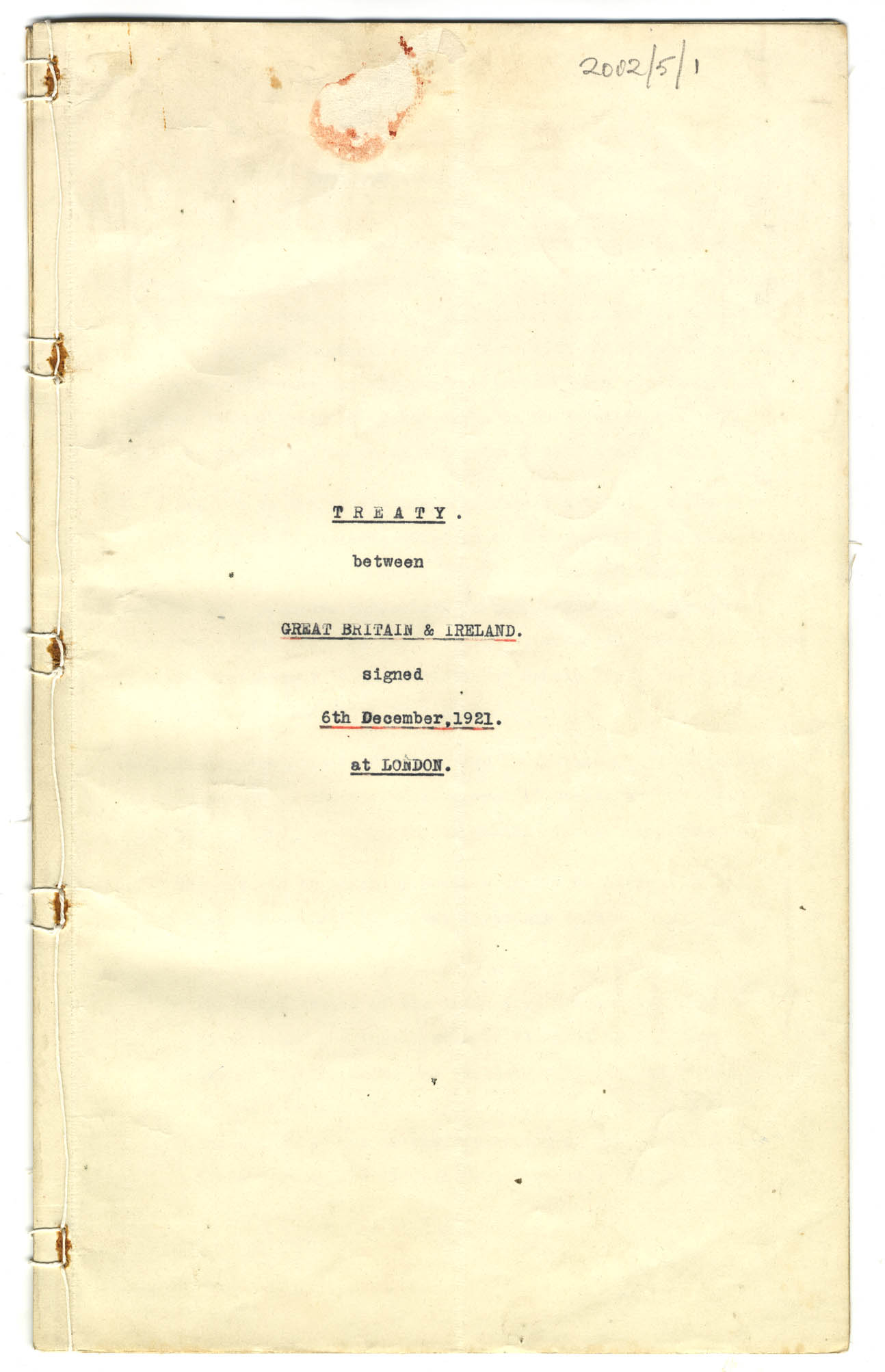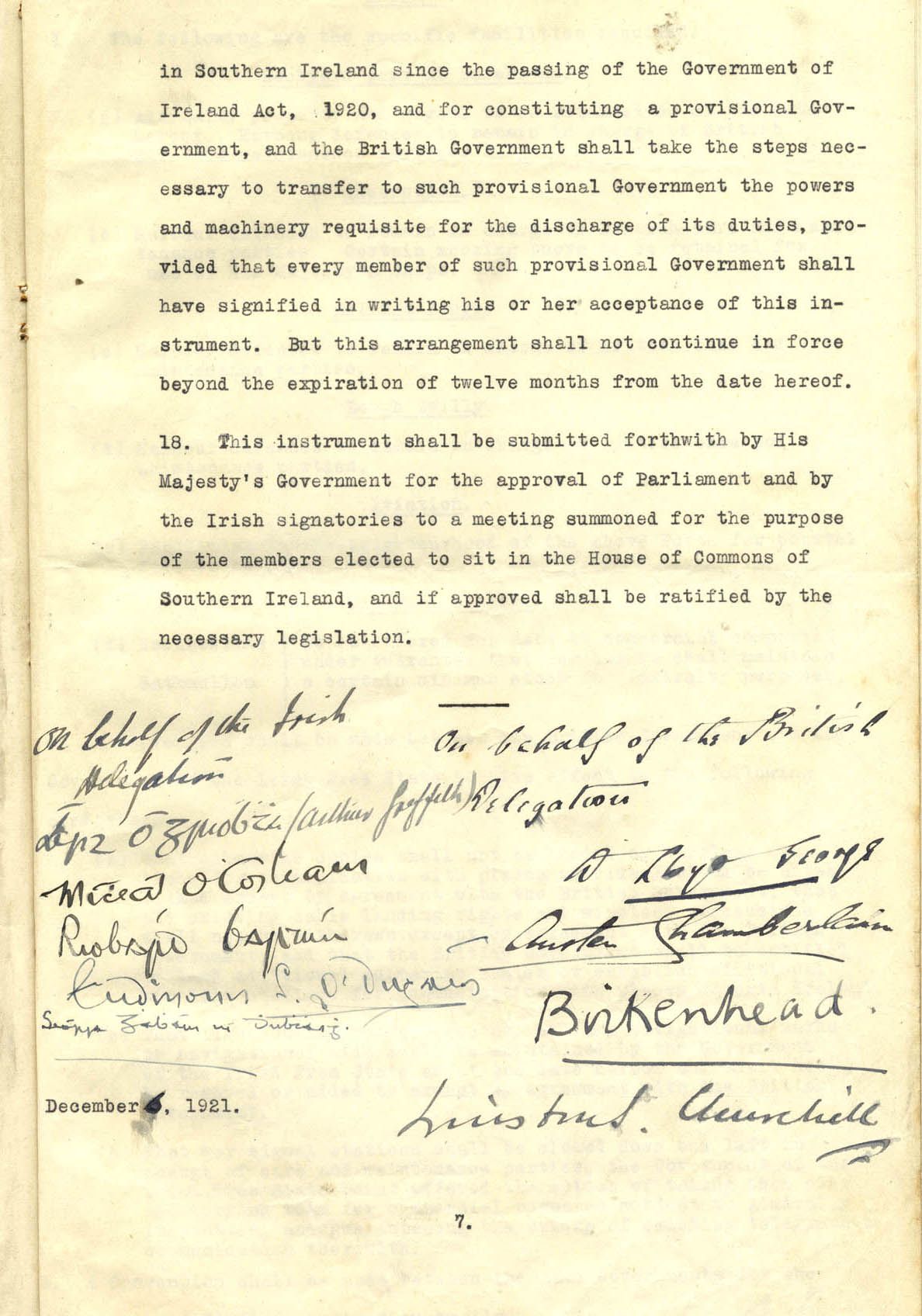1921
-
British Reprisals
January 01st, 1921After an ambush on Black and Tans in Midleton in December 1920, the British reprisals took place, leading to the destruction of civilian houses with explosives. These reprisals were in response to an attack on a mixed patrol of Black and Tans and RIC which took place on 29 December 1920.
-The Clonmult Farmhouse
General Strickland had his Military Officers handed out notices to selected civilians who were under the suspicion of being sympathisers to the I.R.A. These notices declared that the homes of each person selected would be destroyed with explosives. Between 3pm and 6pm, Lorries of British Soldiers began to arrive in Midleton and set about entering the houses and shops that had been selected for destruction. The first shops to be entered were those of Paul McCarthy, Edmond Cary and Jack O’Shea. The occupants were ordered out and mines were then places in each of the buildings. Later that day, the Midleton Garage and Engineering Works were burned to the ground by the Black and Tans. The other civilians who were targeted for reprisals were Rodger Aherne, Bartholomew Cotter, John and Jim Myles, Michael Dorgan, Mr Aherne of Knockgriffin and the Dorgan family of Ballyrichard. With the official notice given, the residents were given one hour to take out their private possession and equipment before the bombings took place.
Cork Examiner, 3 January 1921, page 5
Freeman's Journal, 3 January 1921, page 5
-Bureau of Military History
The above information has been sourced from The Bureau of Military History John Kelleher (WS: 1456) Volunteer Witness Statements.
-
The Clonmult Ambush
February 20th, 1921The greatest loss of life for the Irish Volunteers occurred at Clonmult, which is situated 7 miles north of Midleton. Here, almost all of the East Cork Flying Column was wiped out in one single engagement with a larger British Military force. The East Cork Flying Column was caught off guard after a British ex-service man disclosed their position to British forces.
-The Clonmult Farmhouse
The 4th Battalion Cork No.1 Brigade, Flying Column was using an abandoned farmhouse known as GarryLaurence for training and taking part in ambushes. The farmhouse lay on the eastern slope of a gentle ridge, 600 yards or so from the village of Clonmult. The approach to the farmhouse was by a long narrow boreen which led to an entrance gate, a front yard measuring 20 yards by 30 yards in size. The house was long and low with only three windows in the front and one very small window in the back. A small outhouse adjoined each gabled end of the house but were separate from the building. Inside the house were 20 Irish Volunteers under the command of Diarmuid Hurley. They had 17 rifles, a mix of Lee Enfields and Carbines, 3 shotguns, 15 revolvers, 6 grenades, 2000 rounds of reserve ammunition and approximately 50 rounds per man.
On the day of the attack the Commander, Diarmuid Hurley, left early to check out a possible ambush point for a military train at Cobh Junction. He was accompanied by Jos. Aherne and Paddy Whelan. He left John P. O’ Connell in charge of the column and ordered them to pack up and be on the move by the evening so they could be taken to a new location close to the Cobh ambush site.
As the mid-day meal was being the men had almost totally packed up and the sentries were withdrawn. As two Volunteers made their way to the fresh water well close by they noticed British Military starting to surround the Farmhouse. One Volunteer inside the farmhouse happened to look out one of the front windows and also see the incoming British forces. The two men at the well, John Joe Joyce and Michael Desmond, only had their revolvers with them as they left their rifles in the house. They both opened fire on the British Soldiers but were hit by multiple rounds and died. Inside the farm house John P. O’Connell decided that they would have a better chance if they engaged the enemy in the open. He took his rifle with a fixed bayonet and ordered that all arms and ammunition be passed around. Michael Hallinan who followed John P. O’Connell was shot at the door while Richard Hegarty was shot a few yards out beyond the front door. James Aherne was shot 50 yards away as he went for cover. John P. O’Connell was the only one to make it out and after he tried to return he knew it was foolish to go alone. He made his way to the crossroads where he met two young Volunteers and asked them to go for guns and help but they never returned. As he waited another Volunteer arrived on bicycle and offered to go the village of Ballyroe, 6 miles away, for help from the North-East Cork Battalion. It was not until late in the afternoon that help arrived on foot but by then the engagement was all but lost.
-Clonmult Site
The men inside the house decided to continue the fight from inside instead of risking being killed by British gun fire outside. After two hours of sustained fire the British forces were reinforced by two lorry loads of Black and Tans. The British Officer in charge ordered grenades to be thrown to set the thatched roof ablaze. As the thatched roof burned the Volunteers inside decided to surrender. They threw their rifles into the burning parts of the house instead of surrendering them.
As the Volunteers came out to surrender they were lined up and seven of them were shot by the Black and Tans as they stood with their hands held high. The remaining eight Volunteers were saved from the same fate when the British Officer took control of the Black and Tans. Two of the eight prisoners were wounded, one was Patrick J. Higgins who was shot in the mouth by a Black and Tan after he surrendered. The men shot as they surrendered were Liam Aherne, Jeremiah Aherne, David Desmond, Christopher Sullivan, Donal Dennehy, J. Morrissey and James Glavin. The Volunteer’s killed at the well were John Joe Joyce and Michael Desmond. The Volunteer’s killed in the fighting were Michael Hallinan, Richard Hegarty and James Aherne. Maurice Moore and Paddy O’Sullivan were executed in Cork on the 5th of May, 1921 by court-martial.
It was discovered not long after that an ex-British soldier informed on the Column. The IRA captured this man, who was only named as Walsh, and discovered he was paid £30 pounds for the information. He was executed by the IRA.
Cork Examiner, 21 February 1921, page 5
Freeman's Journal, 21 February 1921, page 3
-Bureau of Military History
The above information has been sourced from The Bureau of Military History (WS: 1467) (WS: 1523) (WS: 808) (WS: 1418) Volunteer Witness Statements.
-
Six Volunteers killed at Clogheen
March 23rd, 1921On the morning of the 23rd of March, 1921, six Irish Volunteers of C Company, First Battalion, Cork No. 1 Brigade were shot and killed by the Black and Tans and RIC at a farm in Ballycannon, Clogheen. It was believed that a member of the IRA, Patrick Connor, gave the Companies position to the British forces during interrogation. On the 25th of February, Patrick Connor was arrested by the RIC for having a revolver in his possession. He was taken into an interrogation room and eventually gave up the position of “C” Company. Patrick Connor was later tracked down by the IRA and shot in New York.
-The Volunteers
Six Volunteers were staying on the farm belonging to Cornelius O’Keefe, which had about 105 acres of land at Ballycannon on the road leading from Clogheen to Tower.
Around 4.00 am on Wednesday morning a large British force approached the farm, which woke O’Keefe from his slumber. The British forces stormed the house and ordered the occupants back into their respective rooms while the farmhouse was searched. When nothing was found, the British forces turned their attention to the farmyard and the barn where the six Irish Volunteers were sleeping. A witness who lived close-by stated that he could see torchlights in the farmyard of O’Keefe, heading towards the barn. As the lights stopped at the barn he heard someone scream “run for it!”, and a dark figure ran across the field. He heard a number of shots and the figure fell to the ground. As the body lay in the field, a light approached it slowly, as if to check was it still there. Not long after, he heard more rifle fire, and as the sun had begun to rise out, he was able to identify the men firing as RIC. The RIC laid the bodies on the ground outside the farmhouse and then took them away in lorries.
Cornelius O’Keefe stated that there was at least five bodies, that he could see, and the last man was arrested, blindfolded and taken away in a separate lorry. Mr O’Keefe was arrested and taken into custody but was released without charge on April the 17th.
-Black and Tans intimidation
The six IRA men killed were Daniel Crowley, aged 23, occupation plasterer, of 171 Blarney Street, Cork; William Deasy, aged 20, of Mount Desert , Blarney Road, Cork; Thomas Dennehy, aged 21, of 104 Blarney Street, Cork; Daniel Murphy, aged 24, occupation pig buyer, of Orrery Hill, off Blarney Street, Cork; Jeremiah O'Mullane, aged 23, of 237 Blarney Street, Cork and Michael O'Sullivan, aged 20 of 281 Blarney Street, Cork.
Cork Examiner, 24 March 1921, page 5
Freeman's Journal, 24 March 1921, page 5
-Bureau of Military History
The above information has been sourced from The Bureau of Military History (WS: 739), (WS: 869), (WS: 1547) Volunteer Witness Statements
-
Spike Island Rescue
April 30th, 1921Three Irish Volunteers serving penal servitude sentences on Spike Island Prison were rescued by a motor boat across the harbour on the morning of Saturday 30 April 1921. As the men, Sean MacSwiney, Cornelius Twomey and Thomas Malone, worked on a golf course in the north-east corner of the island, they made a break for a soldier’s revolver and ran for the incoming motor boat at about 9.00 am.
-Recalling the Past
Another prisoner inside Spike Island had identified Thomas Malone as a prominent Republican. The British needed confirmation of this and sent out someone to gather information and confirm this. This man was captured by the IRA and executed before he could relay any findings back to Spike Island. Liam Lynch sent Thomas Malone a message that read, “We will get you out of there. It will only be a matter of time before they identify you.” Soon after Thomas Malone learned he was to be transferred to Cork City Barracks with a number of other prisoners, which usually meant they were being sent to be executed. Mick Burke who was the officer commanding the Cobh Company was ordered to put a plan together for a rescue. He and Sean Hyde came up with a daring plan using a motor boat in broad daylight.
A new golf course was being built for the officers, close to the water’s edge, and only three prisoners were allowed to work on it at a time, with one armed guard and a course supervisor. As the three men worked on the course the idea was to get as close as possible so they could simply jump on board.
-Point of Rescue
The man piloting the boat, “Duster” Walsh, set off from Cobh harbour with Captain Mike Burke, George O’Reilly, Andrew Butterley and Frank Barry aboard. The men put up the Union Jack flag and pretended to be fishing. After some time had passed and the guard was used to seeing the boat close to shore fishing, the men took action. Thomas Malone rendered the sentry on duty unconscious with a hammer he had been using while on work detail. Sean MacSwiney and Cornelius Twomey subdued the supervisor and soldier, and both were bound and gagged. As the men boarded the motor boat, they began to have trouble with its engine. At the same time, some Officers came across the gagged soldier and supervisor and noticed the boat with the men on board. Quickly realising the situation, the officers blew their whistles and shot their revolvers in the air to raise the alarm. The men on board knew they would not make it back to Cobh, they decided instead to go right for Ringaskiddy, which was about a half a mile away. The boat crashed on the rocks close to a place called ‘Paddy’s Block’. The men left the vessel and made their way along the shore by Martello Tower and up to the village where they came across a horse and trap.
-Google Map of Landing Area
The trap was not large enough for the party of men so the escaped prisoners were sent on in it with Jerome Crowley and Sean Hyde to Ballinhassig. After the rescue, the motor boat was handed back to its owner, Ned O’Regan. It was later given to Mick Burke as a memento.
Cork Examiner, 30 April 1921, page 6
Freeman's Journal, 30 April 1921, page 5
-Bureau of Military History
The above information has been sourced from The Bureau of Military History (WS: 845) (WS: 190) Volunteer Witness Statements.
-
The Murder of Father James Callaghan
May 15th, 1921On Sunday 15 May 1921, well-known and highly respected Cork priest, Father James O’Callaghan was killed by Black and Tans. Father O’Callaghan was staying at the home of Liam de Roiste, No 2 Upper Janemount, Sundays Well, who was one of the newly returned members of Parliament for Cork City. Father O’Callaghan had been renting a section of the house in Sundays Well while his own new residence was under renovations. Just before 4.00 am on Sunday morning a number of disguised men, later identified as Black and Tans smashed through the front door of Mr De Roiste’s residence and opened fire immediately, shooting Father O’Callaghan. It is believed that the Black and Tans were there to kill Mr de Roiste.
-De Roiste
An ambulance was called and took Father O’Callaghan to the North Infirmary where, he passed away at 6.00 pm on the Sunday afternoon.
Mrs Kate McSweeney was Father O’Callaghan’s housekeeper and was present in the house of Mr De Roiste as Father O’Callaghan was brutally murdered. She recalled many years later in a hand-written letter what took place on that Sunday morning. Mrs Kate McSweeney stated that on the morning in question, they were woken by loud knocking. As they got out of their beds, Father O’Callaghan who was partly dressed, went to the window, opened it, and spoke to the Black and Tans. He proclaimed that he was a priest and only a guest of the house but the Black and Tans got angry and banged at the door. At this point Mrs Kate McSweeney put her head out the window and said “there is nobody here only three girls. You can’t expect us to open the door at this hour of the night”, and then again, they said, “come down and open the door”. As she was heading down to opened the door one of the Black and Tans broke open the panel of glass in the front door and opened it. As they entered the house and went up the stairs, with a cap on his head and a scarf around his neck as if trying to disguise his face, Mr Kate McSweeney stood between him and the priest and tried to remove his cap but was unable too. She then told them that “this is Father O’Callaghan, you won’t shoot him”. The Black and Tan pushed past her and shot Father O’Callaghan. The shot hit Father O’Callaghan’s spine, paralysing him. The Black and Tan then walked out calmly. He was dressed in civilian clothing and was very much drunk, as stated by Mrs McSweeney.
Cork Examiner, 16 May 1921, pages 3 and 5
Freeman's Journal, 30 April 1921, page 5
-Bureau of Military History
The above information has been sourced from The Bureau of Military History P. J. Murphy (WS: 869) Volunteer Witness Statements.
-
The death of Diarmuid Hurley
May 28th, 1921On 28 May 1921, Diarmuid Hurley was billeted in the townland of Bloomfield alongside Jacko O’Connell, Joseph Ahern, Tom Buckley and Patrick J. Whelan, just a mile from Midleton and three miles from Carrigtwohill. That morning, the men heard reports that an enemy cycle patrol from Cobh had raided houses in the Carrigtwohill area. This angered Diarmuid Hurley greatly because he had issued orders that all Company Commanders should arrange to have Volunteers on duty at all hours, in order to take action to prevent such raids. Diarmuid Hurley decided that he would investigate the reports, while the other men would carry on without him to a meeting with Con Leddy at Conna.
Diarmuid Hurley took a revolver and one grenade with him to Carrigtwohill. About a mile from Midleton, at a road junction for Carrigtwohill and Lisgould, he ran into a foot patrol of Black and Tans and two RIC constables. The Black and Tans recognised Hurley and he was ordered to halt for inspection. Diarmuid Hurley drew his revolver, opened fire on the patrol, and threw his Mills grenade to inflict damage and cause confusion so he could escape. Dashing for cover, he followed a low fence until he was only a few yards from the corner. At this point one of the patrol members shot him in the back with a rifle and the bullet exited his stomach. It is thought he was killed instantly.
-Monument close to the event
Local Volunteers, Jimmy Barry and Joe Kinsella, were sent to investigate the shooting and explosion. On arriving at the area, they discovered the body of Diarmuid Hurley lying dead in the spot where he was shot. They used a pony and cart to remove his body and bring it to Paddy Daly’s house at Gurteen.
-Hurley's Funeral
After Patrick J. Whelan and Tom Buckley arrived in Conna, they waited all day for Con Leddy, who did not show. As they returned, they reached the village of Clonmult and it was here they received the news that Diarmuid Hurley had been killed by a patrol and his body removed to Gurteen. The men had his remains taken to Churchtown. Here, Doctor John Walsh embalmed his body. His comrades of the column held a wake, and they moved his body to a temporary vault in the local cemetery, with the help of John Kelleher. After the truce of July 1921, Diarmuid Hurley’s body was re-interred, with full military honours, in the Republican plot in Midleton cemetery.
-Bureau of Military History
The above information has been sourced from The Bureau of Military History (WS: 756) (WS: 1444) (WS: 1449) (WS: 1523) Volunteer Witness Statements.
-
Attack on 2nd Hampshire Regiment Band
May 31st, 1921On the morning of Tuesday 31 May 1921, members of the Second Battalion Hampshire Regiment Band, X Company, under Captain C. H. Fowler, were victims of a bombing outside Youghal.
-Close to The Location
As the Second Battalion Hampshire Regiment Band set off towards their firing range at Youghal to take part in training they were devastated by a roadside mine. Even though standard security measures were taken by the British military, the Band being preceded by a strong advanced guard with soldiers flanking on either side, and a strong rear-guard protecting their flank, it still was not enough. Half a mile from the range, the country road passed through a Glen. The location had a raised area of land to the left, which rose above the road, and a small wall and lower lands to the right. It was around here that the First Battalion of the IRA had placed a landmine connected to a battery via a wire hidden along the bank. The mine was very large and was filled with explosives. As the convoy passed, the Irish Volunteers lay silently hidden by undergrowth.
Just as the last of the Band passed the explosive, it was set off, along with a rapid volley of gunfire. Three of the Band members were killed instantly by the blast and nineteen others were wounded, four more died later due to severe injuries sustained in the explosion. Two of the band members killed in the blast were young boys.
-A Band Boy
A Court of Military Inquiry heard from the Officer in charge of the Band. He stated that the attackers had a clear view of the convoy and could see that the band were unarmed and only carrying musical instruments. He noted that the people of Youghal had grown to like the band and the entertainment they provided, indicating this is why they were targeted. After the facts were heard and the court deliberated, they declared it as "cold blooded murder".
Patrick J. Whelan, vice-commandant of the Fourth Battalion of the Cork No. 1 Brigade, later explained that the explosive used was an improvised explosive device constructed from a spent British artillery shell. The aim of the attack was to hit a column of British soldiers had but on the day of the attack, Paddy O’Reilly who was the triggerman, hit the “on switch” too early. It was not their intention to inflict harm on the band members, but only the soldiers behind them. He stated that if the switch was flicked only a few seconds later the band would have only received minor wounds
Cork Examiner, 31 May 1921, page 5
Freeman's Journal, 31 May 1921, page 5
-Bureau of Military History
The above information has been sourced from The Bureau of Military History Patrick J. Whelan (WS: 1449) Volunteer Witness Statements.
-
The death of Commandant Leo Murphy
June 27th, 1921Leo Murphy was only 16 years of age when he joined the Irish Republican Army in 1917. Within two years, he had established the movement in Ballincollig where he lived. He eventually became the acting Commandant of the Third Battalion of the Cork No. 1 Brigade (Ovens) after the capture of Commandant Tim Herlihy. Lieutenant Frank Egbert Vining, Intelligence Officer of the 1st Manchester Regiment had become aware of Commandant Murphy’s movements from an informant. Vining and five other British officers, undercover in civilian clothing, traced Commandant Murphy and his comrades to Donovan’s public house at Waterfall and surrounded the building. Commandant Leo Murphy and a handful of Volunteers were holding an IRA Company Council inside. Commandant Leo Murphy was shot in the head as he reached for his rifle.
Volunteer Michael O’Regan’s witness statement (WS: 1524) on The Bureau of Military History website gives a detailed account of the day Commandant Leo Murphy was assassinated. Four IRA men attended a Company meeting held in Donovan’s public house where locals were celebrating after a bowling match. The Volunteers were armed with two rifles and two revolvers, which they left behind a door of the porch leading into the pub. Commandant Leo Murphy was shot, and Sean Murray, Dick O’Keeffe, Jerry O’Sullivan, and local Volunteers and several civilians were arrested. Three RIC lorries arrived. One of the RIC named Sullivan identified Leo Murphy’s body, as he lay dead. Each prisoner was dragged and forced to walk over the body of their Commandant as they were being loaded onto the lorries.
-The Grave Of Leo Murphy (1921)
Cork Examiner, 29 June 1921, page 5
Freeman's Journal, 29 June 1921, page 5
-Bureau of Military History
The above information has been sourced from The Bureau of Military History (WS: 1524), (WS: 810) Volunteer Witness Statements.
-
The murder of Volunteer Denis J. Spriggs
July 8th, 1921Denis Spriggs was an active member of the Irish Republican Army from 16 years old. At the time of his death at the age of 19 years, he belonged to C Company of the First Battalion of Cork No. 1 Brigade. He was a plasterer by trade and was an active member of the Cork branch of the Irish Plasterers’ union.
-News Article
On Friday 8 July 1921, Denis Spriggs called to see his mother at their home in Strawberry Hill off Blarney Street. Active members of the Irish Republican Army had been ordered to leave their homes and to go on the run until the truce was declared, in case of reprisals before the truce came into effect. Unfortunately, a neighbour who was loyal to the British forces saw Denis Spriggs when he arrived home and informed on him that night. Very close to midnight, and when the entire household was already in their beds, the house was raided by the 2nd Battalion, South Staffordshire Regiment of the British Army, commanded by Lieutenant A. d’Yewalle. Lieutenant d’Yewalle was notorious for carrying out executions on unarmed Republican prisoners and his men were complicit in following his orders. As the British Forces raided the house of the Spriggs family, to capture Denis Spriggs, he surrendered himself without any struggle, knowing what could happen to his family if he did not. Despite his surrender to the British forces, they marched him at gunpoint 100 yards from his home and placed him against the main wall of the convent, close to the end corner adjoining a local farm. Here, unarmed and a prisoner of war, the British Forces executed Denis Spriggs without court-martial.
-Location Of Memorial (Google Maps)
During the Military inquest into the death of Denis Spriggs, Lieutenant A. d’Yewalle, claimed that Denis Spriggs was shot while trying to escape. The inquest jury agreed with d’Yewalle.
Cork Examiner, 11 July 1921, page 3
Freeman's Journal, 11 July 1921, page 6

-Bureau of Military History
The above information has been sourced from The Bureau of Military History P. J Murphy (WS: 869) Volunteer Witness Statements.
-
British soldiers executed on eve of truce
July 10th, 1921On the night of 10 July 1921, four unarmed British Soldiers were on leave from their station at Cork Gaol, the night before the truce was to be signed. It is stated that one of the soldiers entered a local shop on Bandon Road to buy sweets when a large group of people began to leave the nearby Father O’Leary Hall. Four members of the local IRA brigade were in the group. They quickly overpowered the four British Soldiers and marched them towards the Lough district. Some civilians called for the release of the soldiers as it was the eve of the truce. The four British Soldiers were lead toward Ellis Quarry, Croghtamore, near the Lough, in St Finbarr’s Parish. Here the four British Soldiers were bound, blindfolded and executed at 9.00 pm. Their bodies were found the following morning with gunshot wounds to the head and still wearing blindfolds.
Connie Neenan was Officer in Command of the I.R.A members who took the soldiers. He was informed of what had happened by his mother. He later detailed his experience: “My mother brought me news about midnight that 4 young British soldiers had just been taken prisoner by our fellows. I felt alarmed. They were, I suppose, out for the first time in months with their guard down. One of them had gone into a shop to buy sweets. I gathered a group and we searched the fields from here to Togher. Around 2am, we met some of our lads who told us the news was bad. I was astounded. Surely, no one would shoot anyone at a time like this. I crept into a house, exhausted and filled with remorse. We could not sleep. We just hung out there until noon the next day. The Truce had come”.
-Denis Spriggs
It has been suggested that the executions of Private Henry Alfred Morris 4905221, "D" Coy. 2nd Bn. South Staffordshire Regiment; Lance Corporal Harold Daker, 4905129, 2nd Bn. South Staffordshire Regiment; Sapper Alfred George Camm, Royal Engineers 1856603 and Sapper Albert Edward Powell 1853916, 33rd Fortress Coy. Royal Engineers, was in retaliation for the death of Irish Volunteer Denis J. Spriggs, 19 years of age, who was taken from his home on the 8th of July, 1921, and executed against a wall in Strawberry Hill.
Cork Examiner, 12 July 1921, page 5
Freeman's Journal, 12 July 1921, page 5
Irish Independent, 12 July 1921, page 5
-The Irish Revolution
The above information has been sourced from The The Irish Revolution Website.
-
The Death of Tadhg Barry
November 15th, 1921On Tuesday the 15 November 1921, Tadhg Barry was part of a group of imprisoned Republicans at Ballykinlar Internment Camp in County Down. At about 2.00 pm they stood by the fence to wave off a group of Republicans who had been just released following the truce. As the men waved at one another, a young British sentry yelled at the men to back away from the fence. Tadhg Barry hesitated or was slow to move, the young sentry did not give any other warning and shot Tadhg Barry through the heart. He died instantly.
-Tadhg Barry (bottom left)
The inquest into his death was inconclusive as the jury was unable to come to a verdict. It was noted that the British authorities had done everything they could to confuse the inquest. They did not produce the sentry for questioning, nor did they produce the Officers in charge for questioning. The 6th Division of the British army filed a report at the inquest describing Tadhg Barry as “a mischievous socialist, bolshevist, or Sinn Feiner, as the occasion demanded”.
-Tadhg Barry's Funeral
Tadhg Barry’s funeral was one of the largest ever witnessed, with 30,000 people marching behind his coffin in Dublin. When he arrived back home to Cork the city was closed down completely as the cortege was led by the Cork Volunteers, Bishops, TD’s, Lord Mayor’s and representatives from every city in the country.
Cork Examiner, 16 November 1921, pages 4 and 5
Freeman's Journal, 16 November 1921, page 5
Freeman's Journal, 21 November 1921, page 3
-
Anglo-Irish Treaty Signed
December 6th, 1921On 6 December 1921 at 2.30 am The Anglo-Irish Treaty was signed. The treaty divided the country and led to “The Irish Civil War”.
-Irish Delegates
The Anglo-Irish Treaty was not what the Irish people hoped for or wanted. It proposed the setting up of an Irish Free State instead of a full Republic. This Irish Free State would be self-governing but still a dominion of the British Empire. The treaty allowed Northern Ireland to stay out of The Irish Free State, which meant a border. This treaty was in negotiations for months with representatives from The Dáil and the British Government. Northern Ireland's Prime Minister refused to be a part of any of the negotiations.
-Treaty Signed
British Prime Minister, David Lloyd George placed even more pressure on the Irish negotiators by threatening them with, “immediate and terrible war”, within three days should they refuse to accept the Treaty. In the early hours of the 6th of December at 2:30am it was signed. Many in the Dáil hated the terms that Arthur Griffith and Michael Collins had agreed to in London. Éamon de Valera the president of the Dáil resigned in protest at the treaty. Members of the Dáil split into pro-treaty and anti-treaty supporters, which then divided the citizens and began The Irish Civil War.
Cork Examiner, 6 December 1921, page 3
Freeman's Journal, 6 December 1921, page 5




